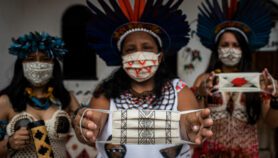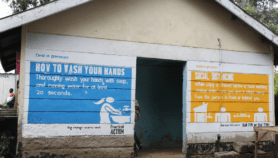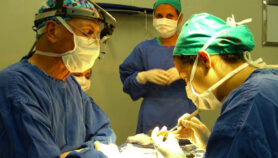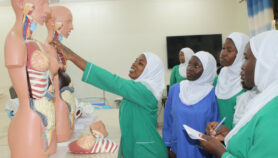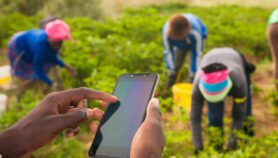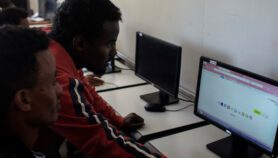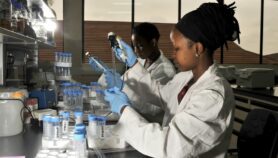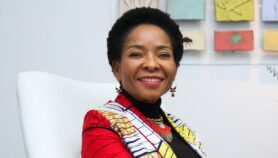By: Todd Gascoigne
Send to a friend
The details you provide on this page will not be used to send unsolicited email, and will not be sold to a 3rd party. See privacy policy.
Early in 1999 there was a conference for people interested in the public communication of science and technology in Berlin, the fifth in a series of international meetings. More Australians attended the Berlin meeting than any other national group (except for the German hosts). This said something about the willingness of Australians to travel; but it also said something more about the organisation of science communication in this country.
The conference was impressed by the vigour and involvement of the Australian delegates. It was hard to avoid: when they were not making plenary presentations, Australians were leading or chairing workshop sessions in proportions far outweighing their numerical presence at the conference. Other delegates referred to “the Australian model” in approving tones. It seems that we had got something right.
The ‘something right’ is the good network science communicators have established here. This began with Australian Science Communicators, a national linking of people with an interest in the public communication of science and technology (PCST).
The only prerequisite to being a member of ASC is $50, or $20 for students. Anyone can join, and the group has members ranging from working scientists and freelance editors, to science journalists, public relations figures in research organisations and science centres, and science teachers.
That was the first big decision the group planning the new organisation made at the National Press Club in February 1994. Should ASC be an exclusivist organisation limited to practising journalists and writers and dealing with narrowly defined issues such as accreditation and ethics, or should it be open to all-comers and all science-related issues?
The planning group decided to admit all-comers.
ASC was an instant hit. Three hundred and seventy five people paid $25 to become Founder Members and provided the steering committee with seeding funds.
It began officially in Geelong in 1994. Julian Cribb, then science correspondent for The Australian, was elected President; and the new organisation carried out its first public function: the presentation of the inaugural ‘Unsung Hero of Australian Science’ to Dr Caroline Mountford by the Minister for Industry, Science and Technology, Peter Cook.
The Australian Science Communicators was born.
Cribb has been followed by a string of Australia’s most distinguished science communicators: the late Ian Anderson (Australasian editor of New Scientist); Alison Leigh (then producer of ABC TV’s Quantum); Ian Lowe (Professor of Science at Griffith University); and Robyn Williams, also of ABC.
What does ASC offer its members, and why has it attracted the attention of groups overseas? Connectability is the main benefit — the major achievement of ASC has been to create a network and a community where none existed before.
Individuals isolated within their organisation or their one-person consultancies have discovered colleagues, common interests, meetings of like-minded people, an e-mail network which carries jobs, announcements, and vigorously-expressed points of view.
Members recently nominated the following benefits:
- networking, and raising awareness of science issues;
- made me feel part of a profession rather than just someone with a fruit salad of a career;
- organised Science in the Pub — I know this is Sydney-centric but it’s great — a social forum in which to hear good speakers meeting some interesting people and helping me to keep abreast with issues;
- given me access to a network that can provide information and work;
- providing my organisation with opportunities for training in communications;
- broadened my understanding of what is science communication;
- provided leadership and coordinated major annual events that have helped to popularise science;
But ASC suffers all the problems of organisations run by volunteers. There have been administrative weaknesses; regional branches have fluctuated from great bursts of activity to silence; and the Committee at times have found it difficult to cope with the competing demands of proper jobs and running ASC.
And there has been some dissension in the ranks, especially when the Australia and New Zealand Association for the Advancement of Science started to crumble after 109 years of leading the public discussion of science in Australia and New Zealand.
So when members were invited to nominate what ASC could do better, they said:
- encourage science awareness in media/politics, actively discouraging anti-science trends;
- run workshops for science communicators (rather than scientists) on specific things like “writing a feature” or “organising/chairing a panel discussion” ;
- I’d like to see more science policy stuff on ASC email list encourage members to develop ideas that help communicate science;
- plug away at overcoming sensationalist science journalism. ;
- promote more debate on science communication issues concern itself;
- more with the nuts and bolts of scientific communication;
- negotiate with key science institutes, societies and associations and R&D organisations to jointly run forums;
- I worry about some of the internal communication, in that I don’t really get much solid information about our directions (except for bickering on the e-mail)
Even if ASC folded tomorrow, its influence would linger for years. So many informal relationships have sprung up that activities would continue even if there were no central body.
The ‘Australian model’ has now been picked up by South Africa with the formation of their own national group. If the respect that Australians earned in Berlin is anything to go on, other national groups will not be far behind.
The author is is executive director of the Federation of Australian Scientific and Technological Societies (FASTS). He pioneered courses in media skills for scientists with Jenni Metcalfe, and runs occasional workshops to train scientists to handle the media.
This article first appeared in April 1999.


